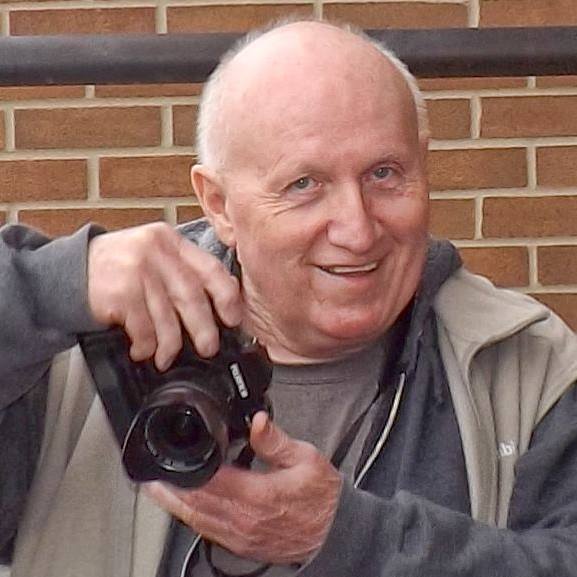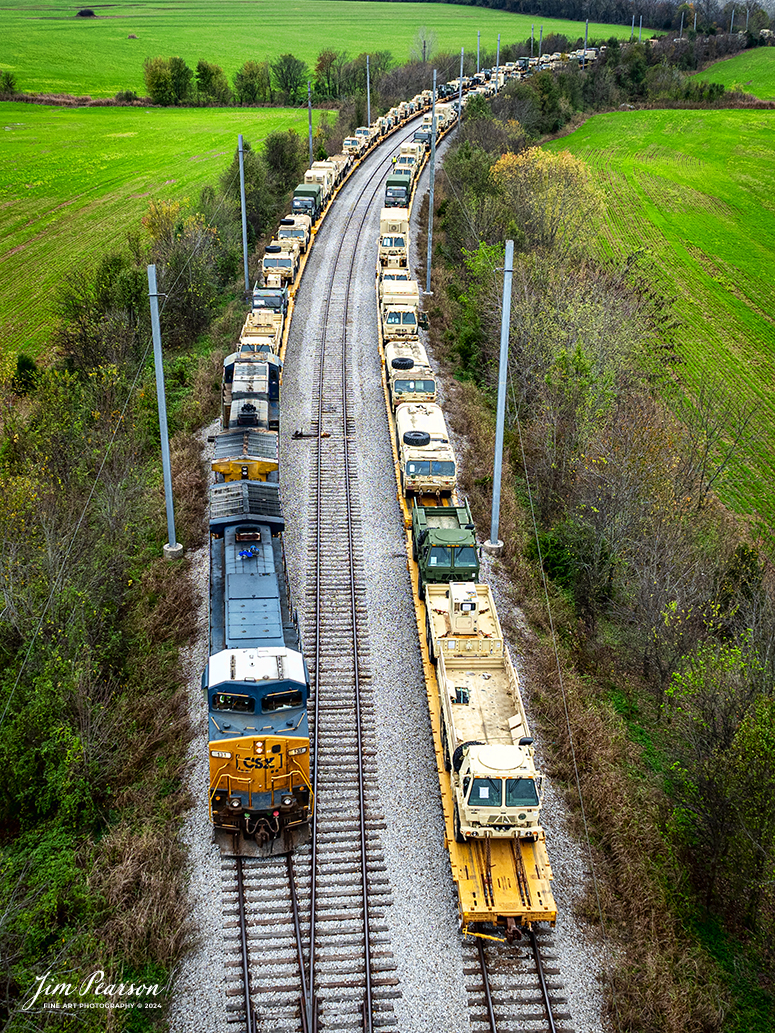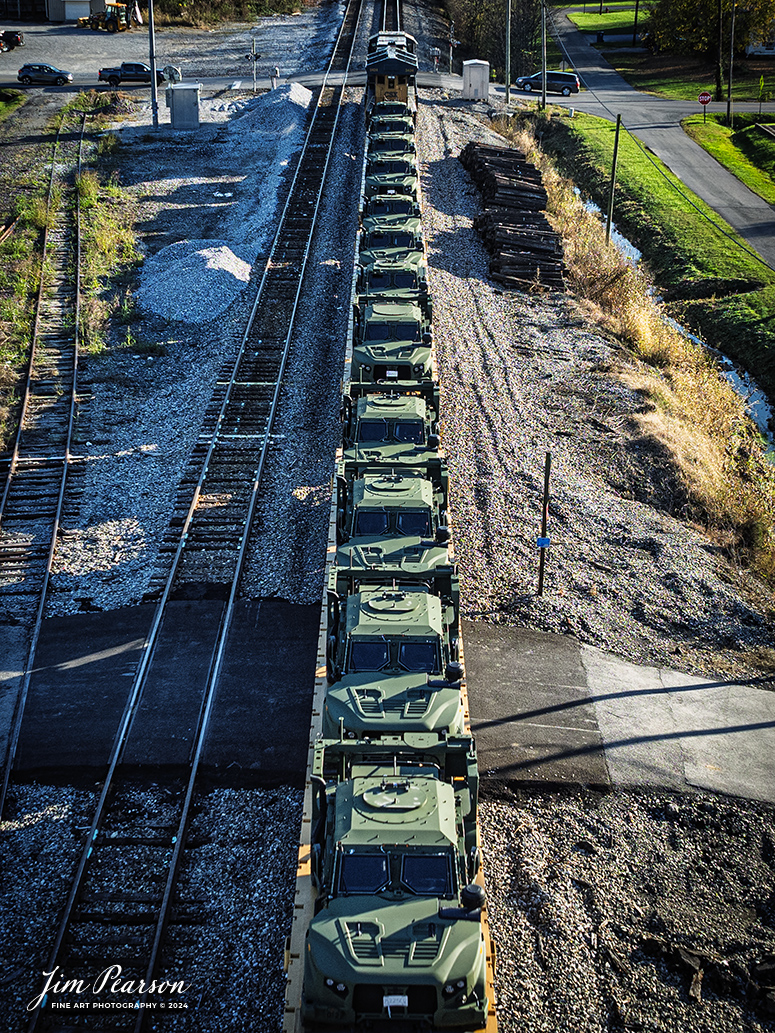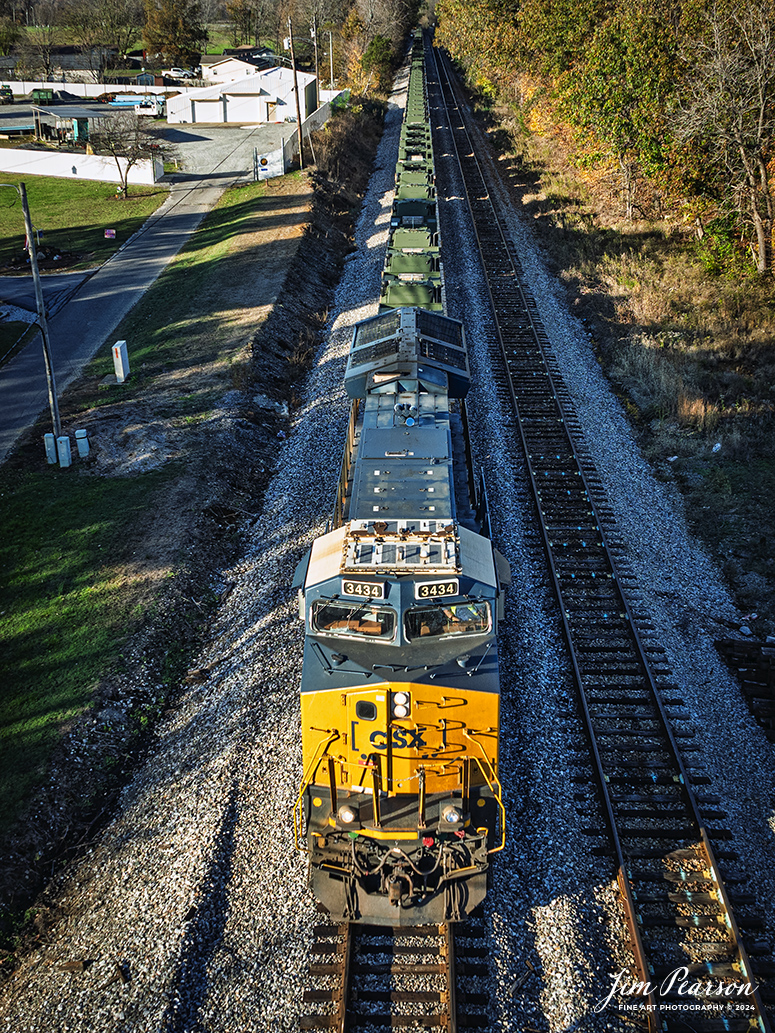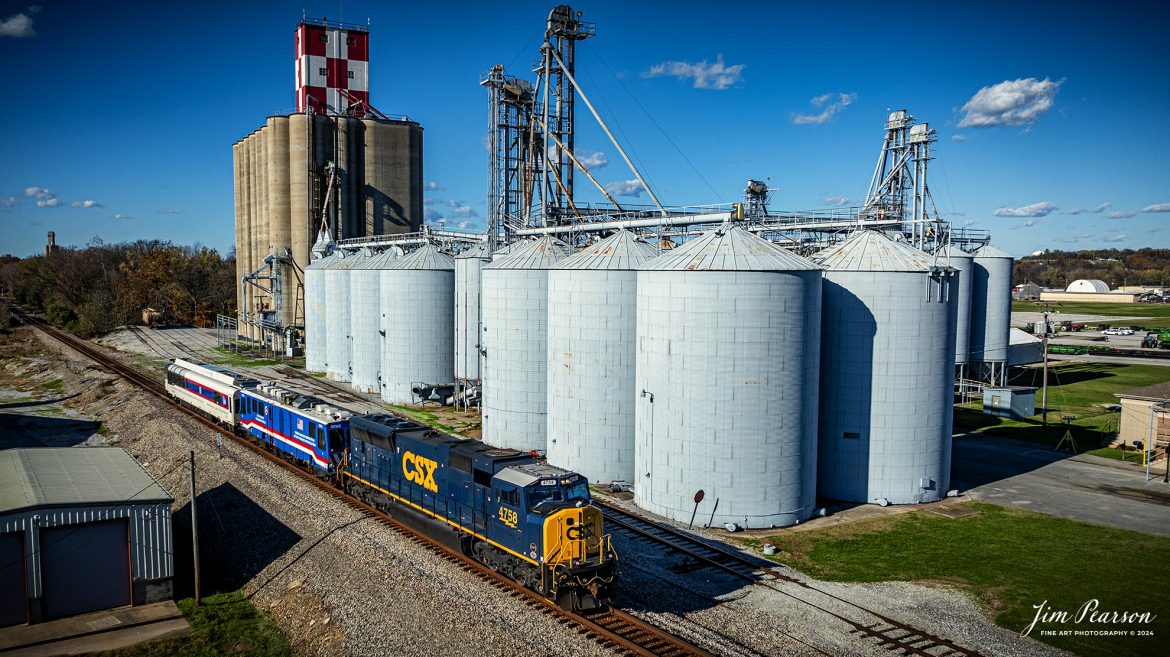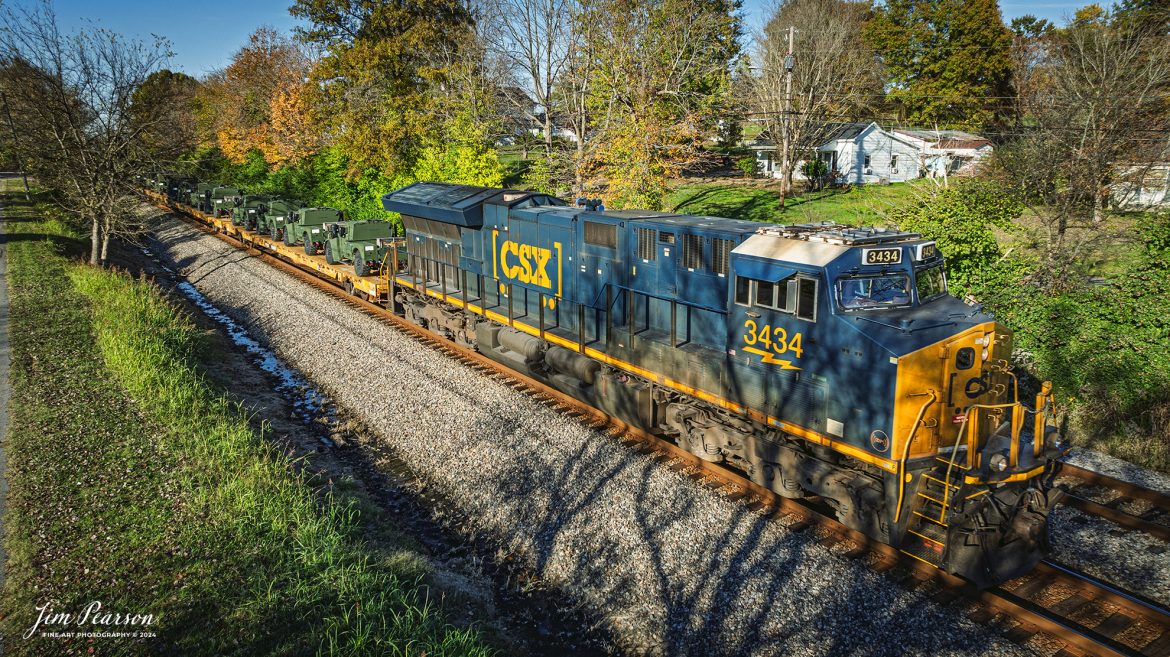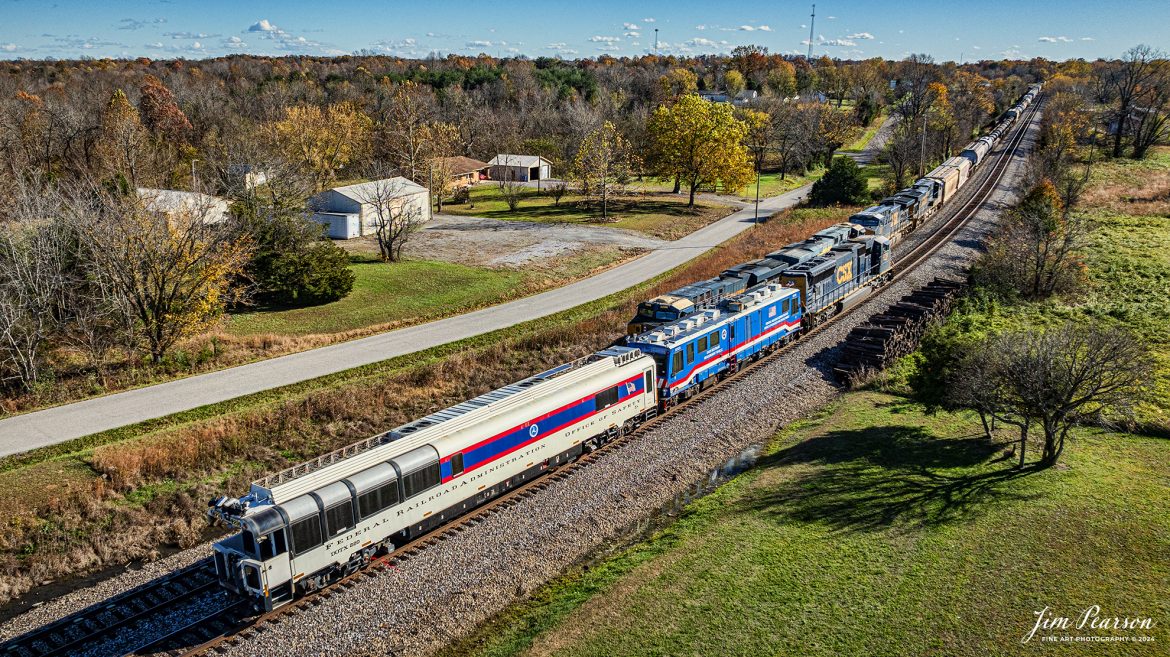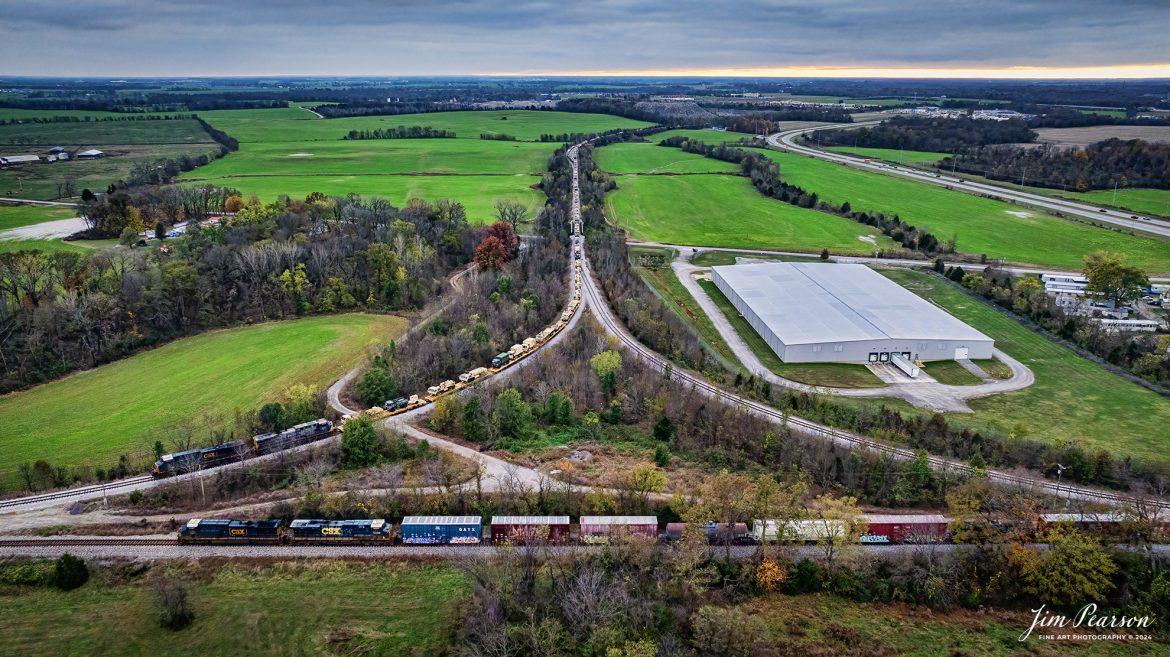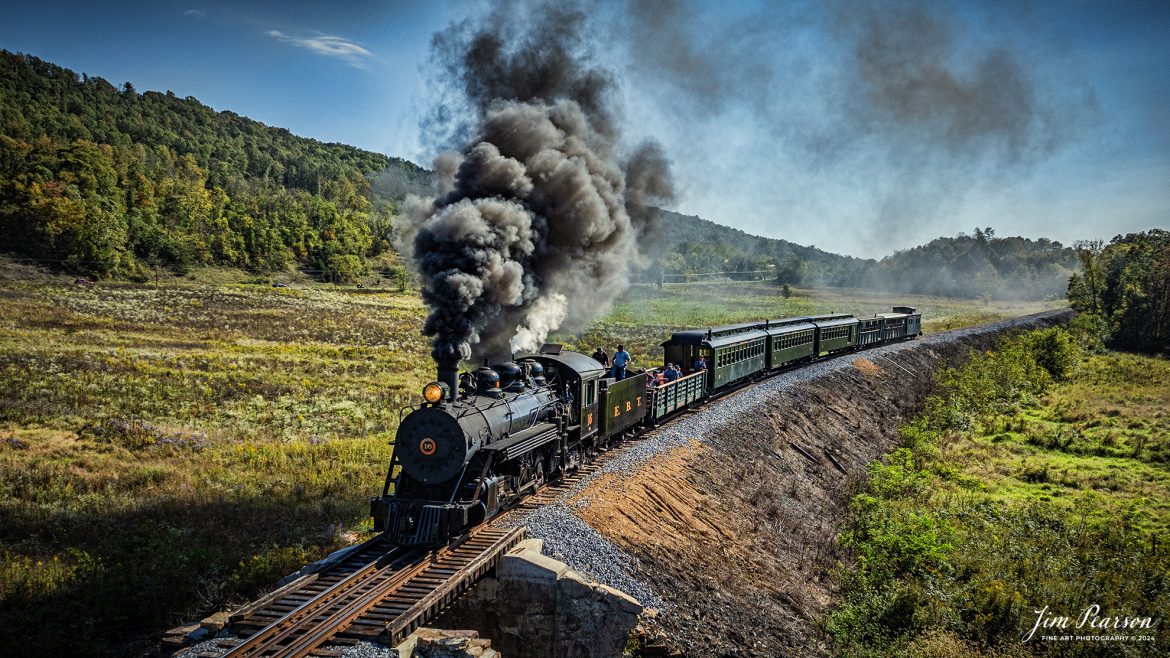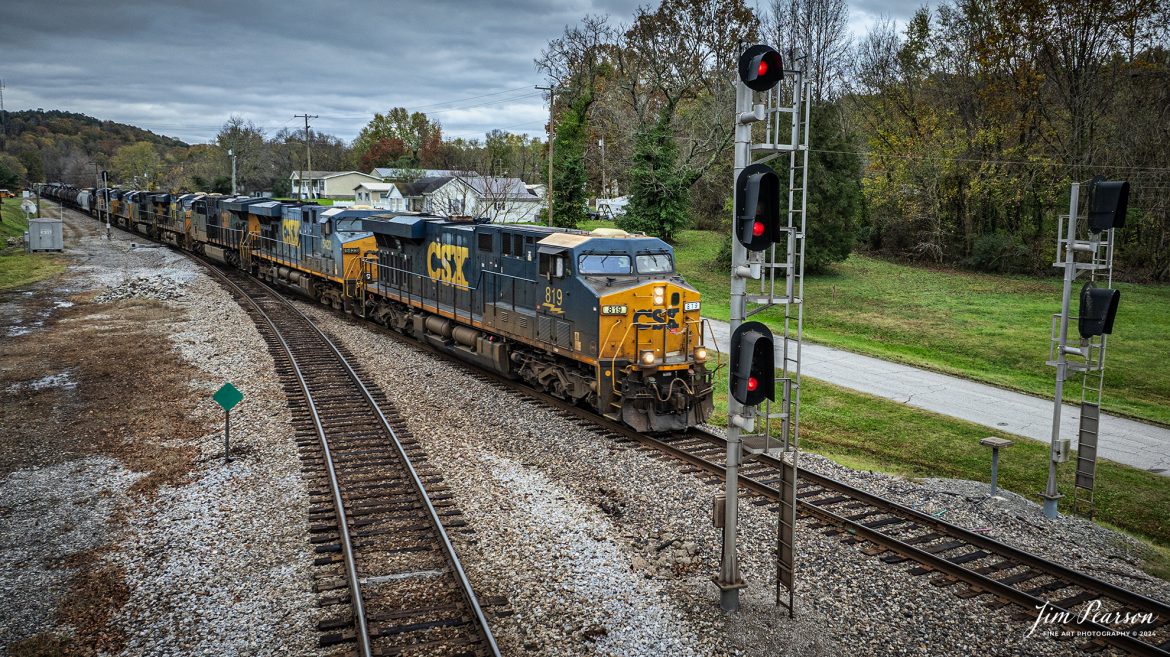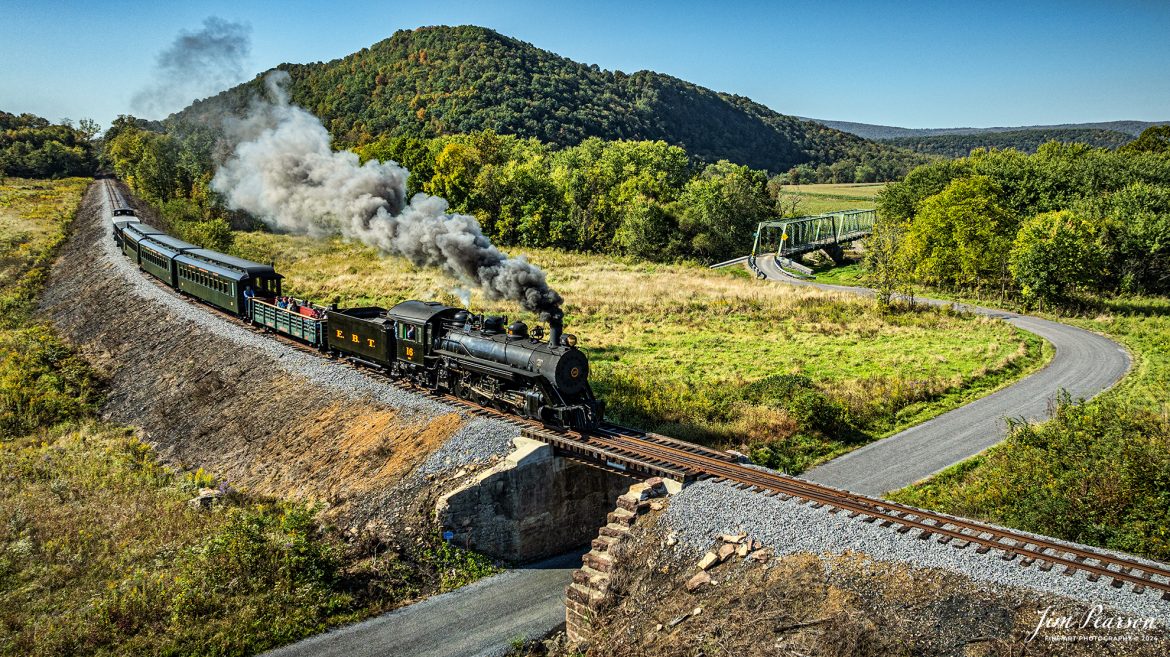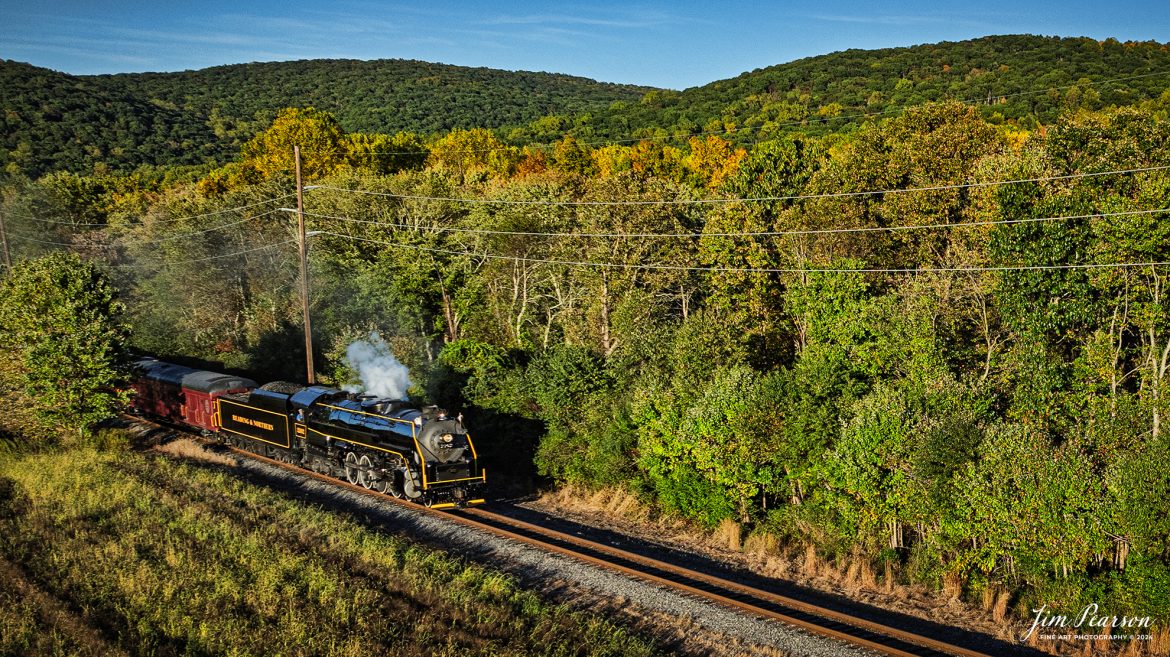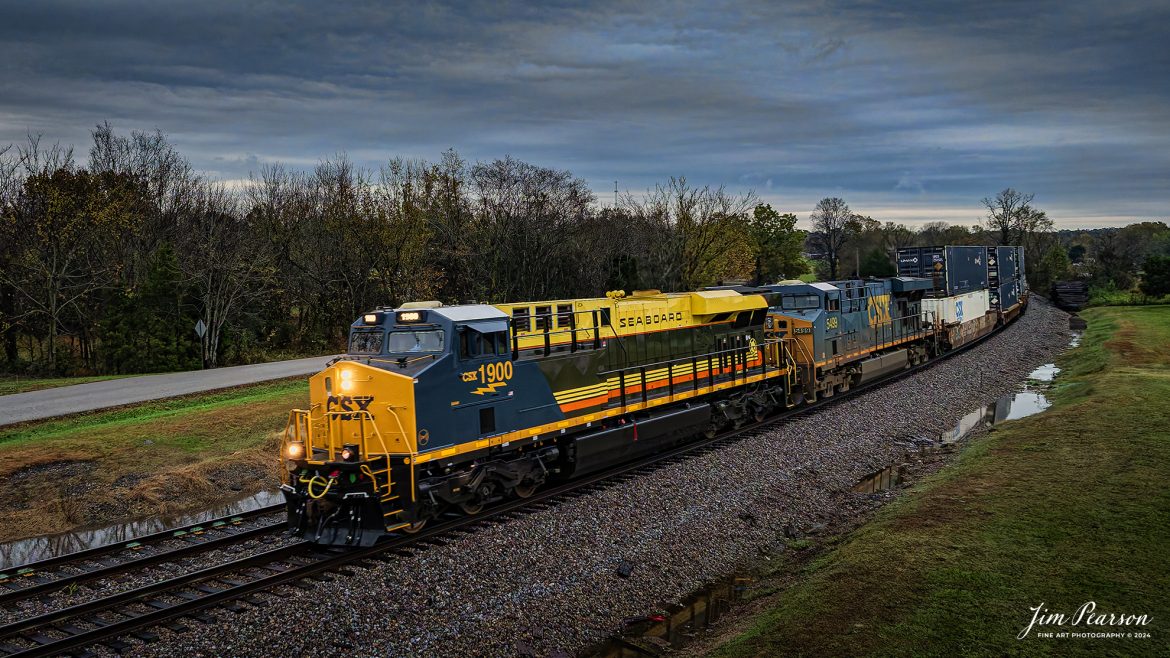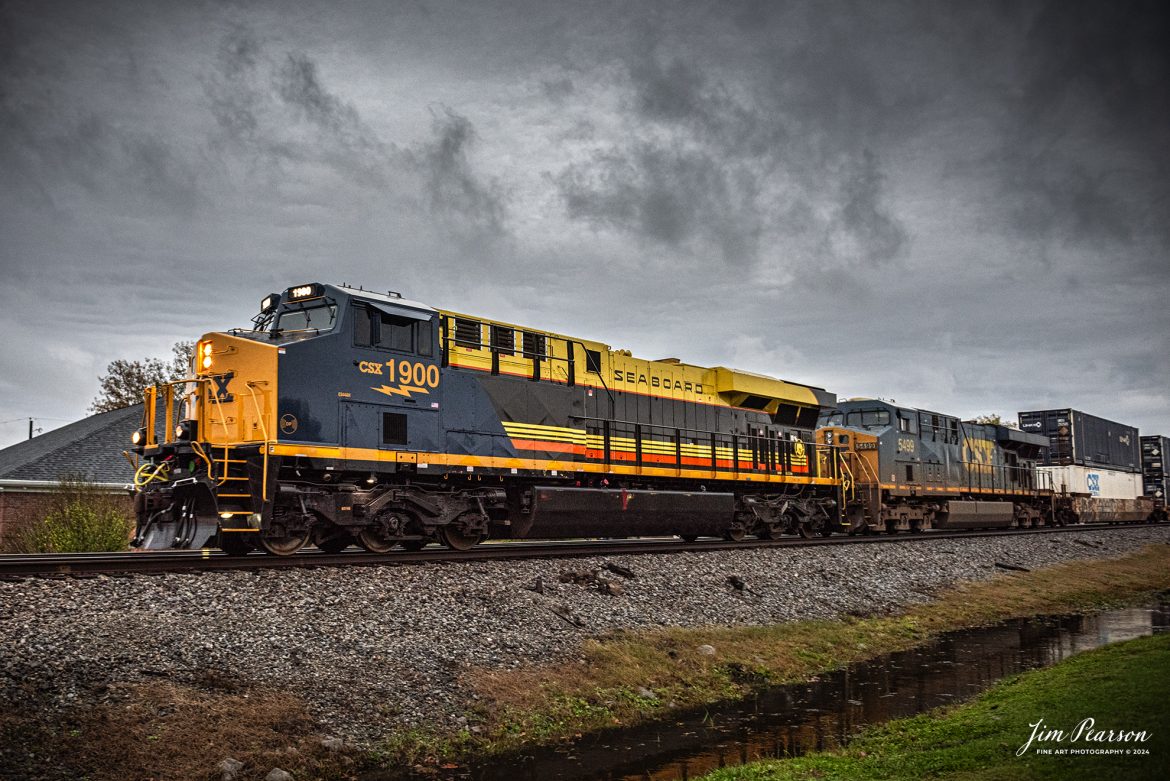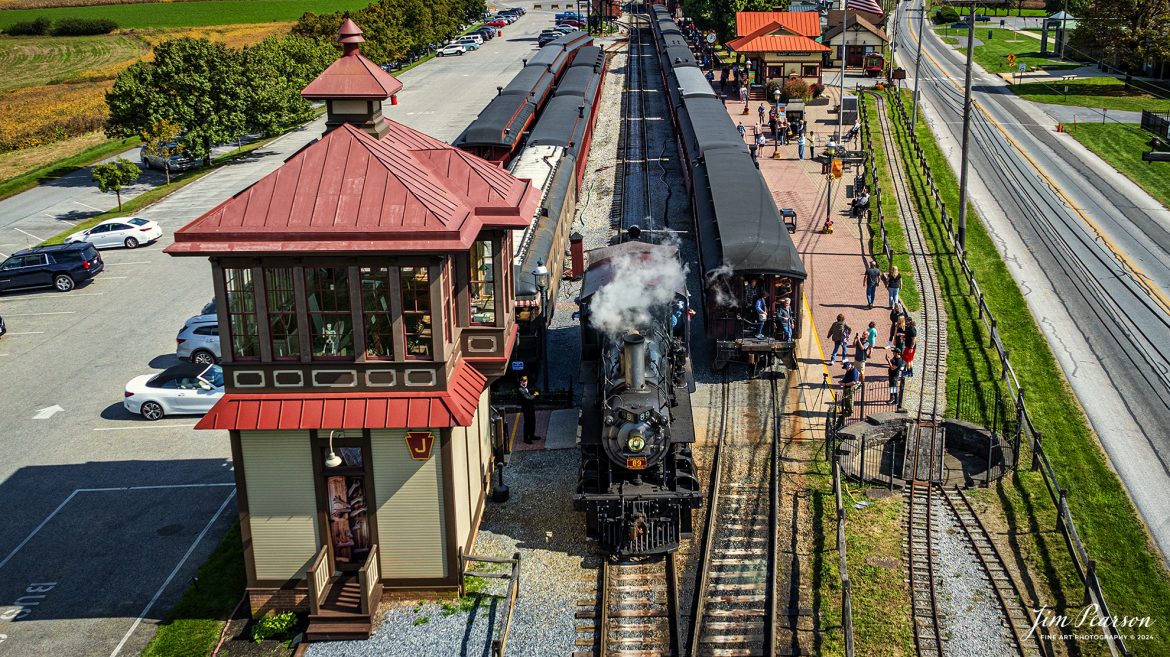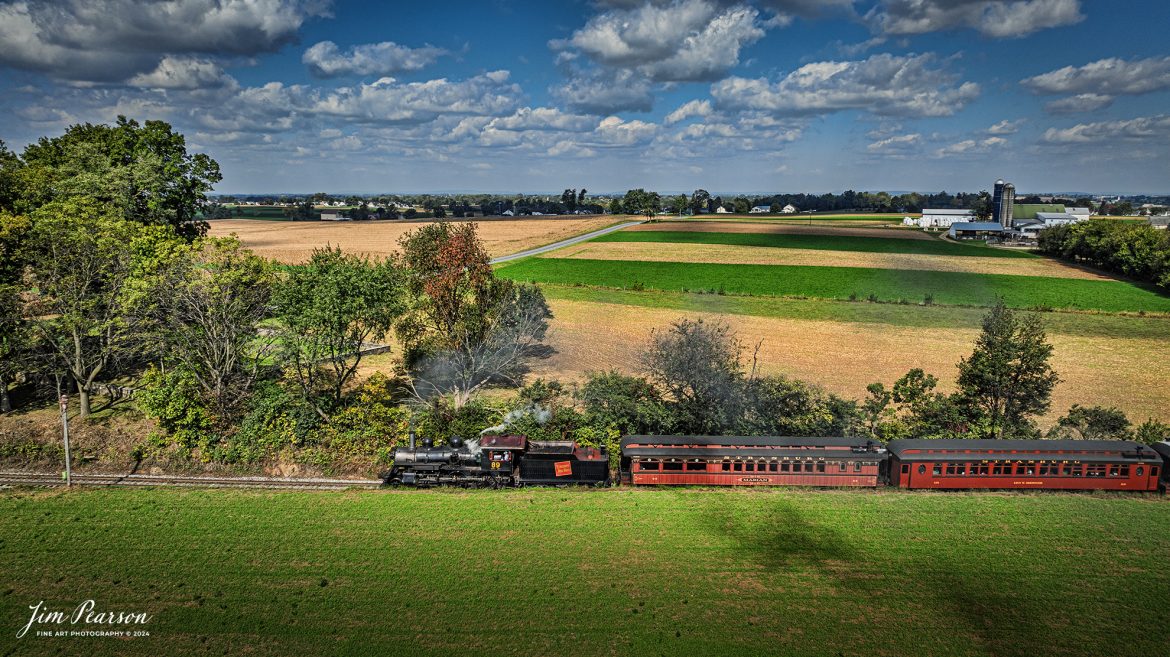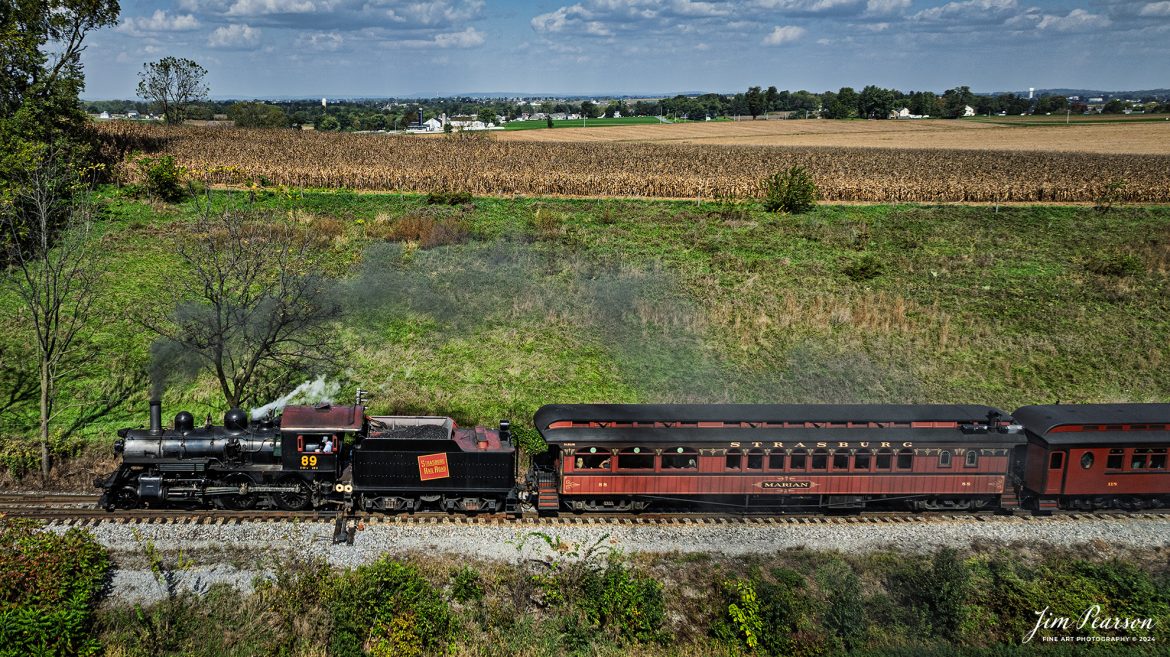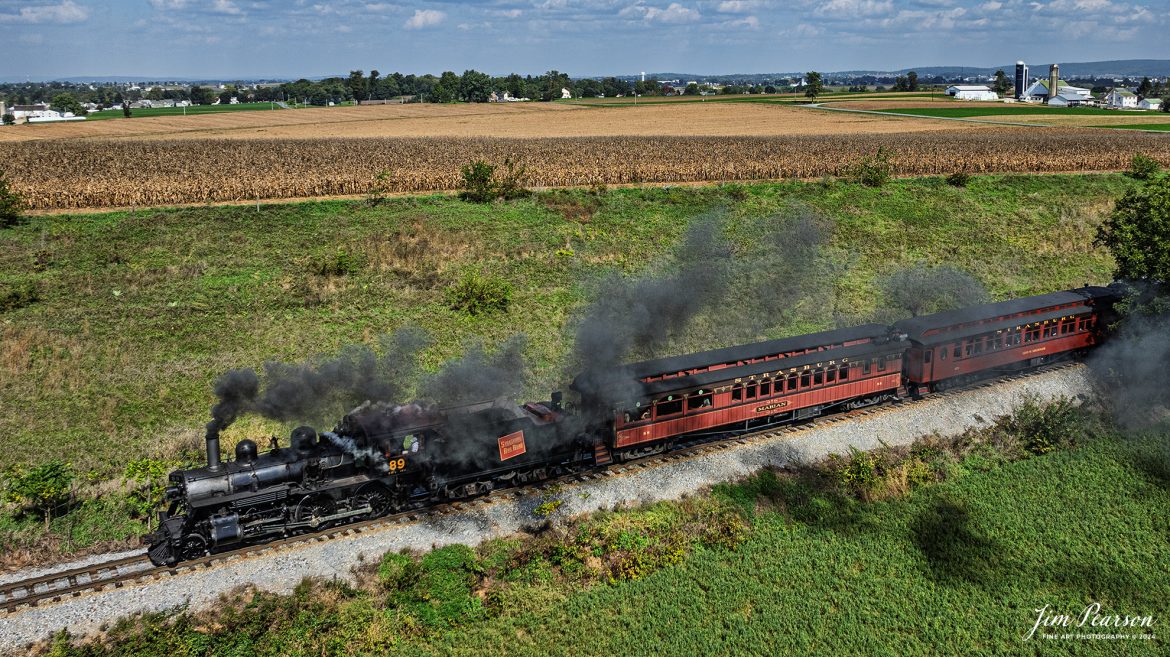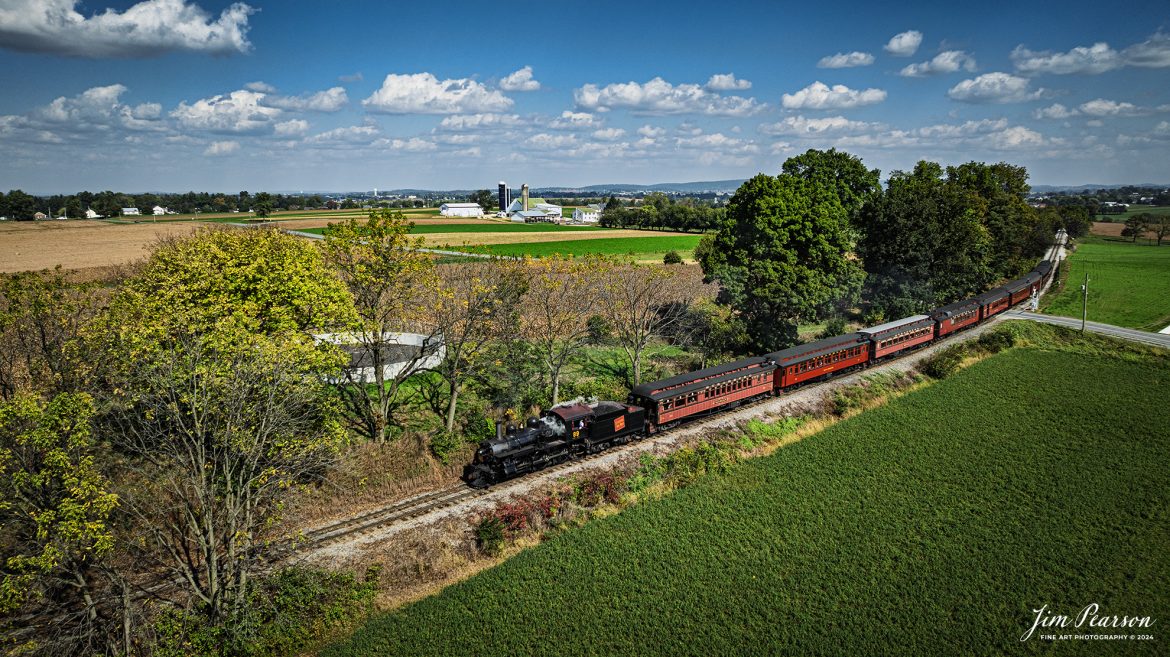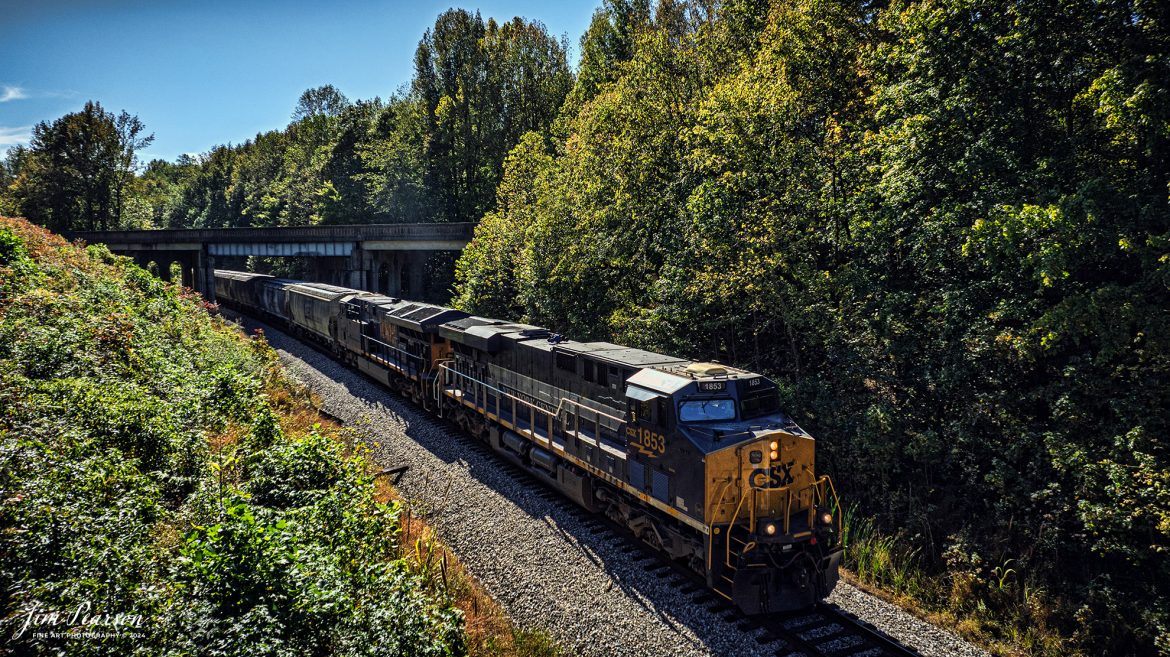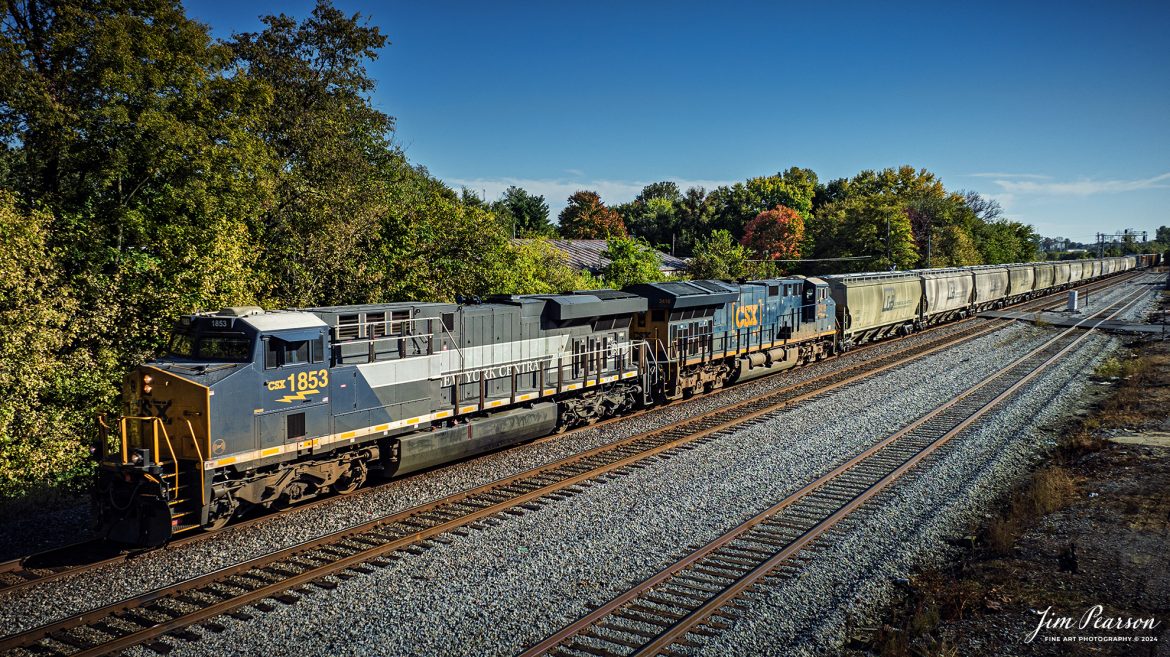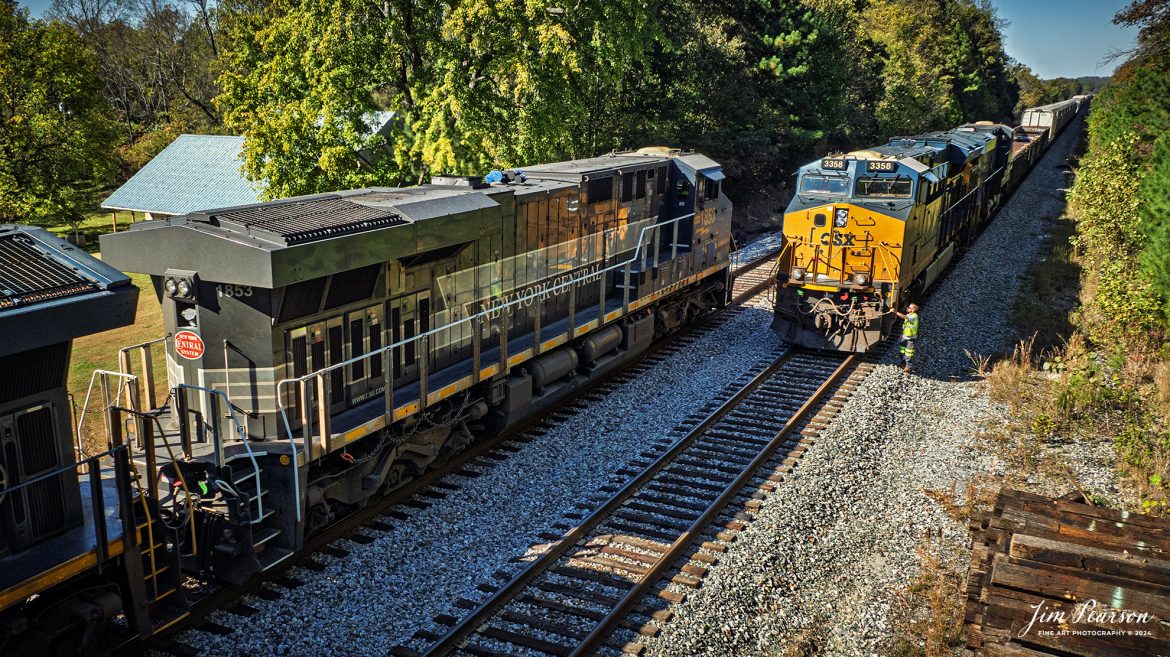CSX I026 with CSX Seaboard Air Line Railroad Heritage Unit, 1900 leading, heads north at Crofton, Kentucky on the CSX Henderson Subdivision, on November 13th, 2024, under stormy skies.
According to a CSX Press Release: August 29, 2024 – CSX has unveiled its 18th heritage locomotive, a tribute to the Seaboard Air Line Railroad, marking another milestone in celebrating the rich history of American railroads. This latest addition to CSX’s heritage series honors the legacy and the significant role that the Seaboard Air Line Railroad played in shaping the rail transport landscape in the United States.
The Seaboard Air Line Railroad, originally established in the late 19th century, was renowned for its efficient service and innovative routes, connecting the southeastern United States to the broader nation. Over the decades, it became famous for its passenger and freight services, symbolized by its slogan “Through the Heart of the South.”
In 1967, Seaboard Air Line merged with the Atlantic Coast Line Railroad to form the Seaboard Coast Line Railroad. This merger was part of a larger trend in the railroad industry aimed at increasing efficiency and competitiveness. Eventually, Seaboard Coast Line became part of CSX Corporation in the 1980s through a series of mergers and consolidations that included the Chessie System and other lines. This ultimately positioned CSX as one of the leading rail networks in the U.S.
The creation of the Seaboard Air Line heritage unit was no small feat, showcasing the meticulous craftsmanship and dedication of ONE CSX team. Jeromy Hutchison, a CSX carman painter, commented on the complexity of the project, stating, “This was one of our harder projects. All of the stripes on the unit are hand laid, making it very complicated.” The intricate detailing is a testament to the commitment delivering a great work product and honoring the legacy of the railroad.
Tech Info: Nikon D810, RAW, Nikon 24-70 @ 24mm f/2.8, 1/400, ISO 2200.
